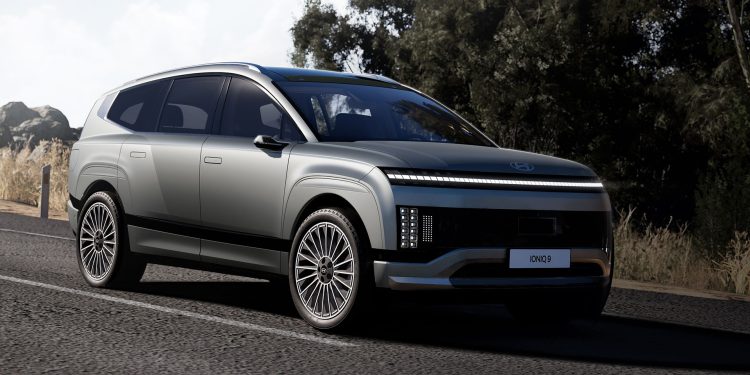Hyundai’s Ioniq 9 Three-Row EV Arriving H2 Next Year
Words NZ Autocar | Images Hyundai
Hyundai has revealed its range-topping Ioniq 9, a three-row, seven-seat all-electric SUV in LA. It is another in what the company says will be a 23-strong line-up of EVs by 2030.
Using the Group’s E-GMP platform, IONIQ 9 offers what the company describes as expansive interior space in the second- and third-row areas. It should do being just over 5m long, just shy of 2m wide and with a wheelbase of 3130mm, the longest of any Hyundai yet.
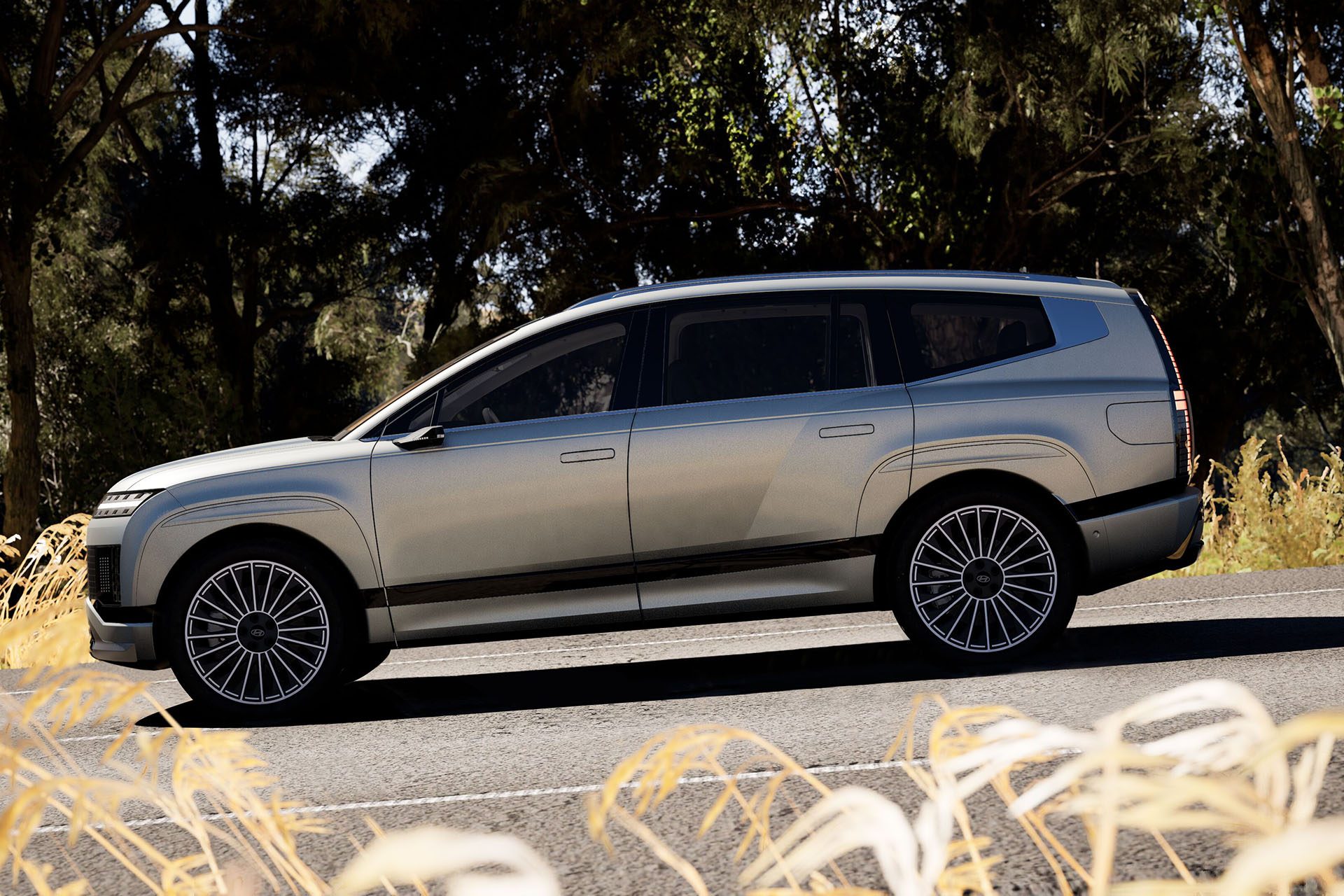
A flat cabin floor accommodates seating arrangements for six or seven occupants. The ‘relaxation seats’ in the front rows can fully recline and include a leg rest for optimal comfort. There’s also a massage function. Up to four people can slumber during vehicle stops. Alternatively, the second-row seats can swivel, so rear seat occupants can face each other for convo when the vehicle is recharging.
A sliding ‘universal island’ moves by up to 19cm and has a total of 18L of storage. It also enables walk-through from front to rear.
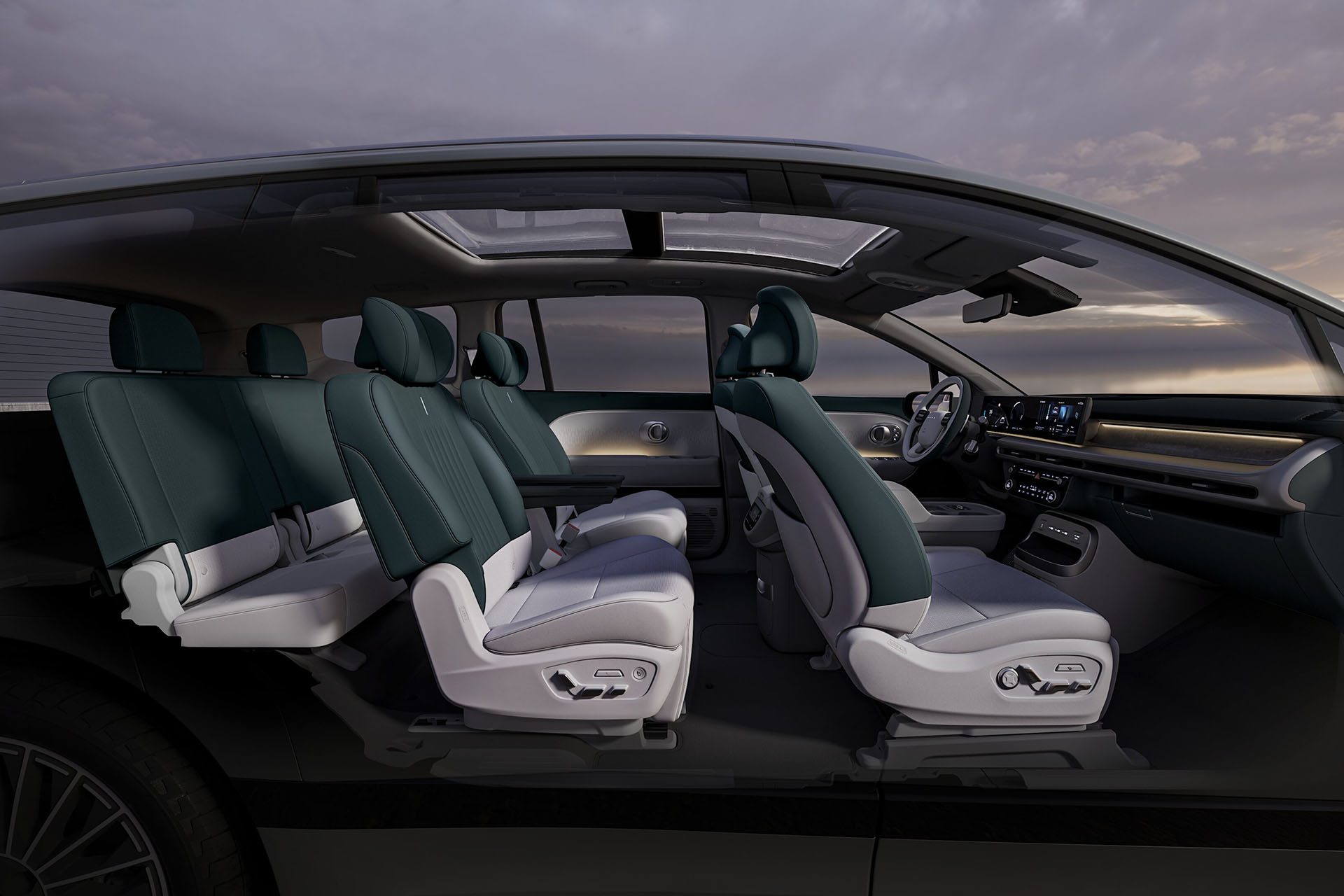
When all seats are in use there’s still 620L of luggage space, and when the third row seats are folded down, there’s 1323L available. A frunk offers 88 litres of additional space in RWD models and 52 litres for AWD models.
Styling features
Styling is more aero-influenced than that of its boxier Kia compadre EV9. Ioniq 9’s ‘Aerosthetic’ exterior reflects Hyundai Motor’s commitment to blending futuristic styling with aero efficiency. The front-end design features Parametric Pixels integrated in the LED light units and lower fascia. In profile the roofline is gently curved. Various aero-enhancing solutions are used to lower drag, including an active air flap and the absence of a roof antenna. Wheel sizes range from 19- to 21-inches. The Cd figure is just under 0.26 when the vehicle is fitted with digital external mirrors.
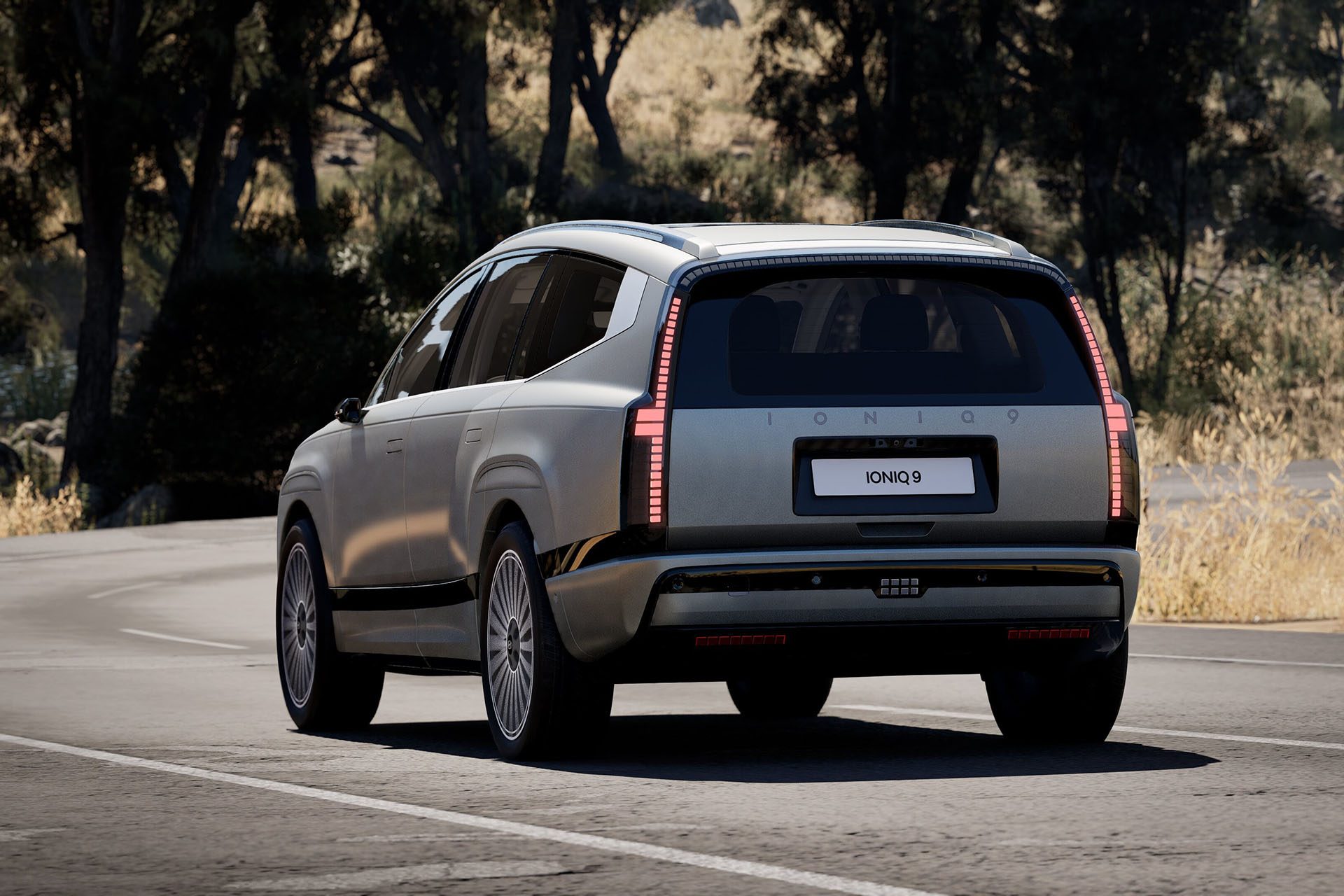
A matrix-style front-lighting system (IFS) prevents glare for oncoming vehicles. Even the outside door handles feature indirect lighting.
The interior features elliptical elements and calming tones, enhanced by natural light from the panoramic sunroof for “a lounge-like experience”.
Quality control
The powertrain is fully enclosed to limit motor noise, while triple sealing and acoustic glass prevent road and wind noise from disturbing the cabin ambience.
Ioniq 9 is the first Hyundai to feature aluminum fenders and quarter panels, contributing to a lighter body for enhanced range. Flush panel fit and a clever new type of door hinge aim for improved fit and finish. The frunk is accessed by a powered hood.
Powering the motors is a 110kWh lithium-ion battery. Hyundai claims a WLTP range of 620km and energy consumption of 19.4kWh/100km. Hooked up to a 350kW charger, a 10 to 80 percent battery refresh takes a claimed 24min. A vehicle-to-load facility is included.
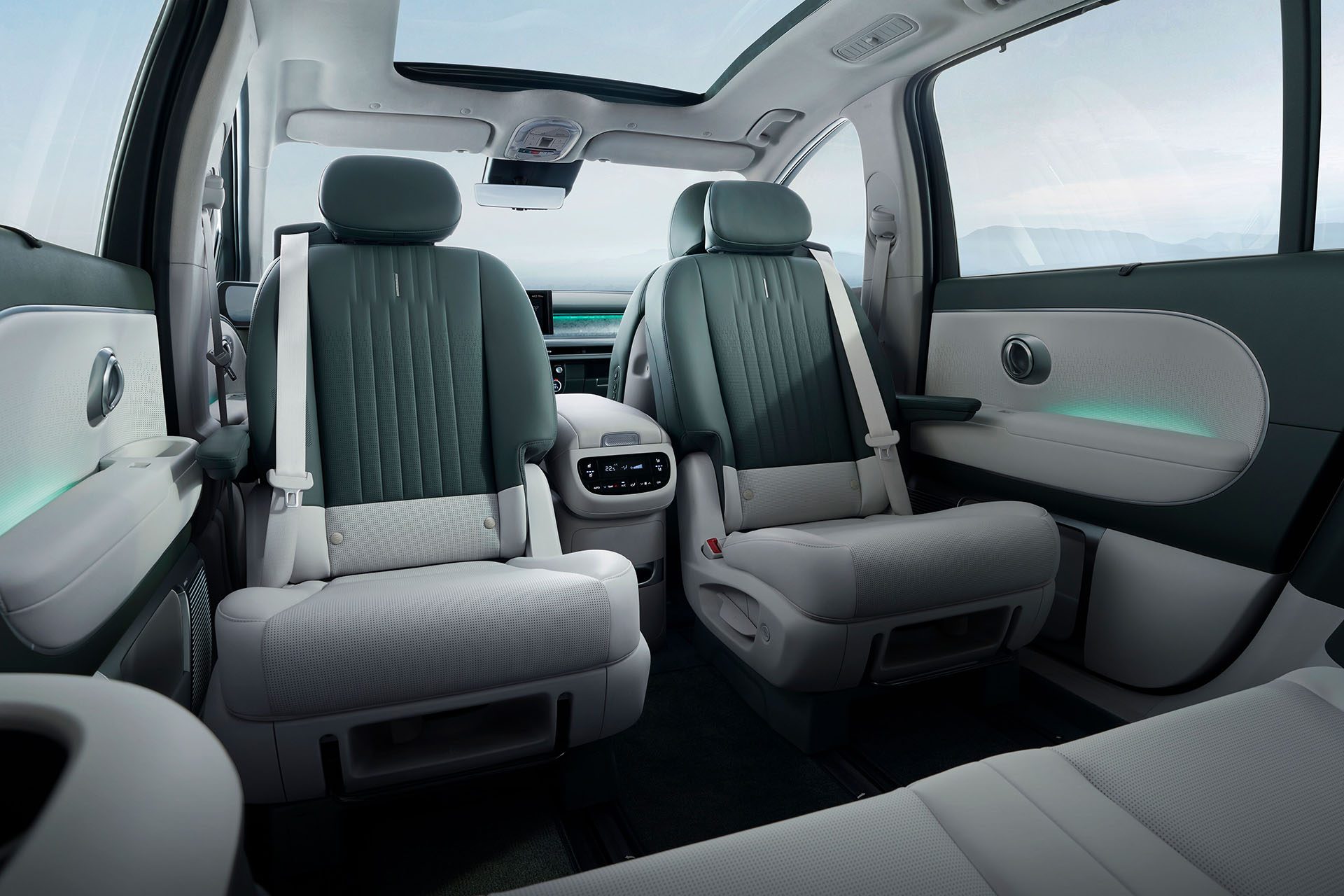
Three variants will be available, a Long-Range RWD model (160kW rear motor, 0-100 in 9.4sec), the Long-Range AWD variant (adds a 70kW front motor, 0-100 in 6.7sec), while the Performance AWD model boasts a pair of 160kW motors at each end (0-100 in 5.2sec). Overtaking 80-120 takes a quoted 3.4, 4.8 and 6.8sec, respectively.
Special features of the powertrain include an optimized gear ratio for hill climbing and a two-stage inverter for improved efficiency.
Special features
A Features on Demand (FoD) service offers digital upgrades purchased from the online store. Examples include dynamic lighting patterns when opening or closing the door, and content streaming options including Amazon Music and Soundcloud. A Display Theme feature allows customization of the screen.
Over-the-air (OTA) software update capability allows in-vehicle controllers to update wirelessly.
Ioniq 9 features a digital key function through NFC communication, a wireless charger with a rubberized charging pad and a cooling fan that reduces device temperature when charging.
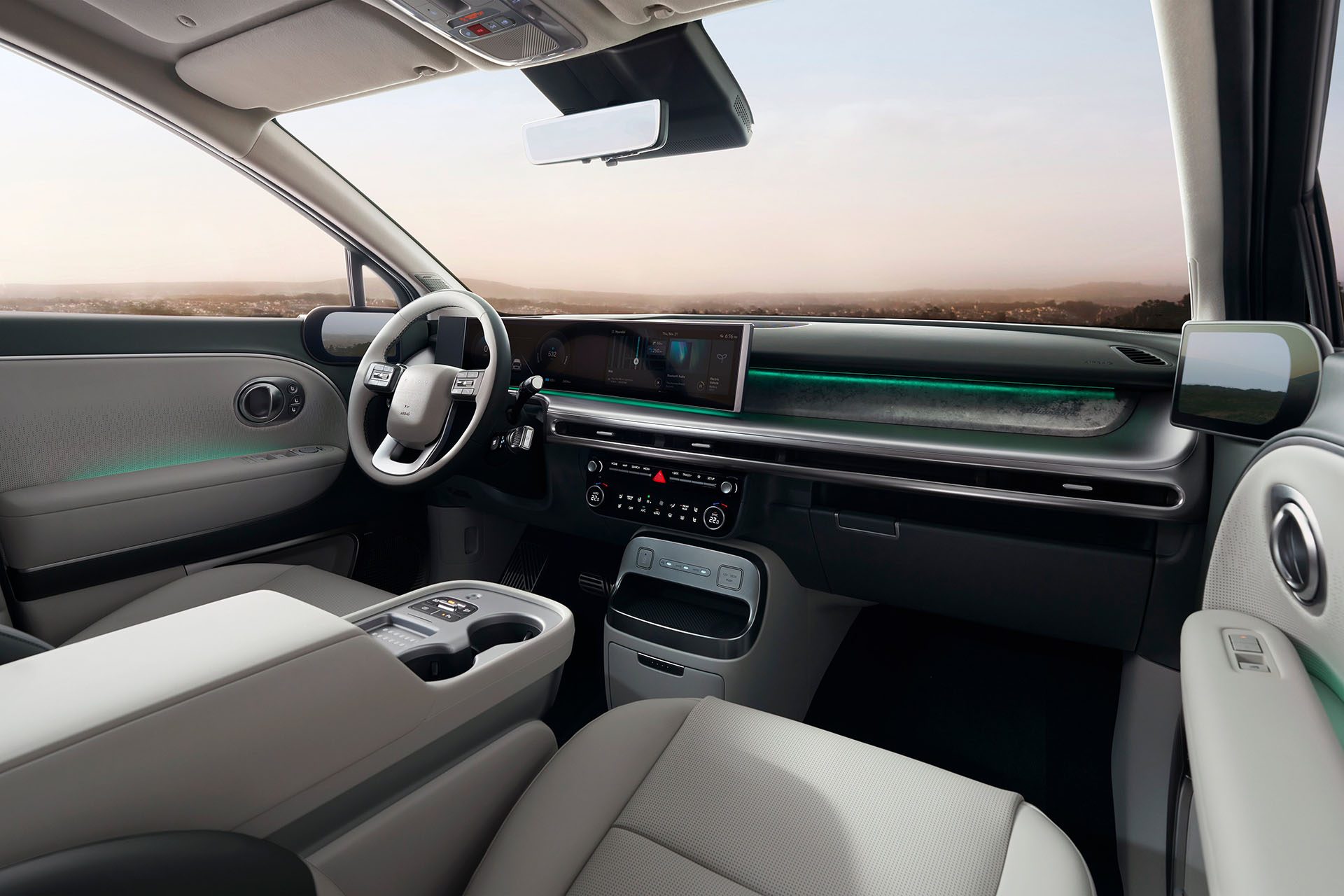
High-output USB-C ports are available for passengers in all three rows. These source power directly from the high-voltage battery. A V2L outlet in the cargo area allows users to power and charge electrical devices and appliances via a standard power outlet using the EV’s battery.
Other special features include a disinfection function and smart AC that can keep the environment fresh when people are sleeping onboard. Noise reduction techniques include sound-absorbing tyres, and Active Noise Control-Road (ANC-R) that cancels out unwanted road noise.
A pair of 12-inch screens handle IFT and instrument duties, all part of a panoramic curved display. An eight-speaker sound system is standard, with the option of a premium BOSE 14-speaker surround sound system. It incorporates e-Active Sound Design (e-ASD). This generates the virtual driving sound of an EV through the audio system.
Safety and dynamics
Along with 10 airbags there’s Hyundai’s latest Advanced Driver Assistance Systems (ADAS). This includes pretty much every safety intervention device known to the industry.
Brakes are tuned for maximum stopping power and efficiency.
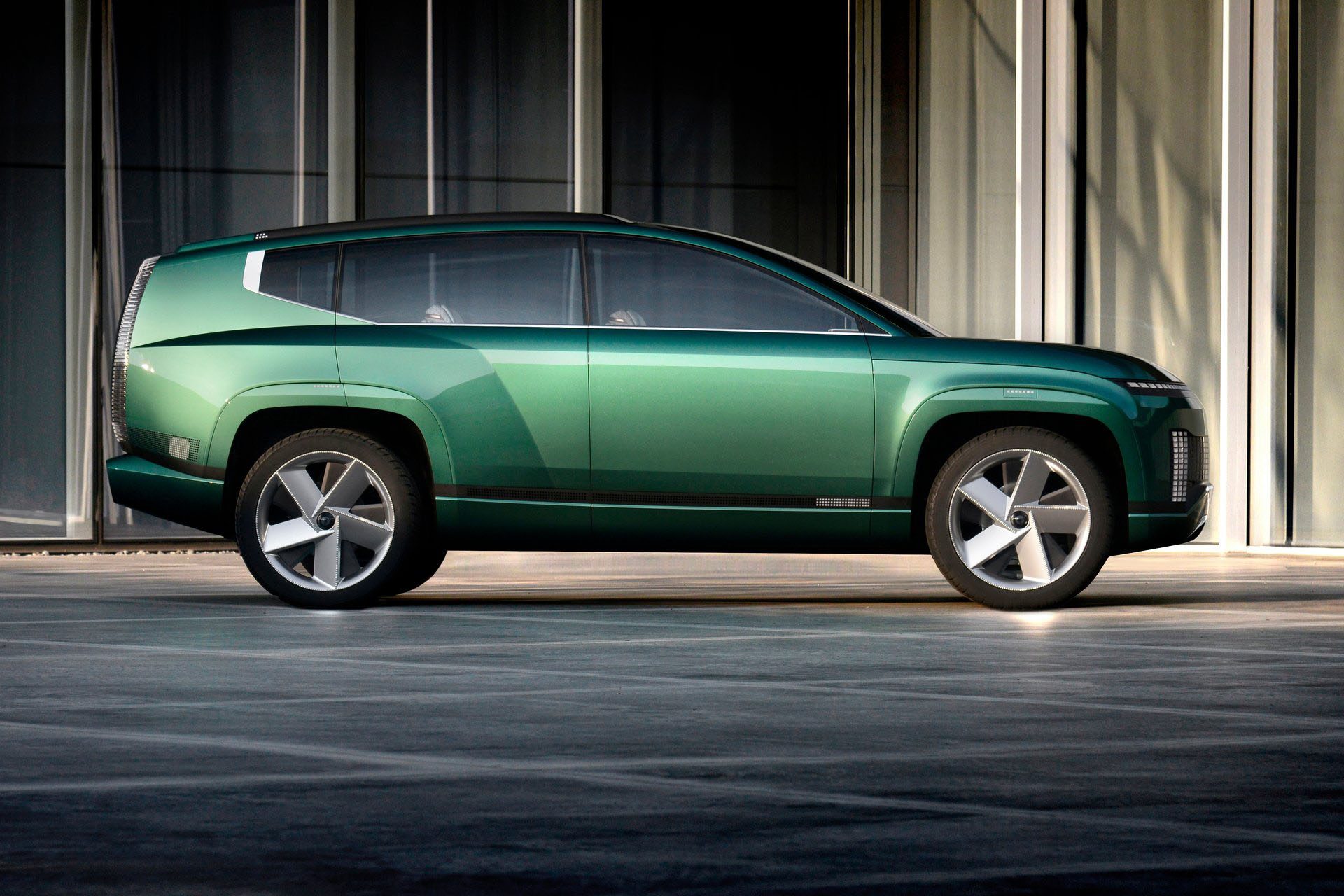
Handling aids include dynamic torque vectoring, and lateral wind stability control for improved high-speed stability. A Terrain Traction Control System is optimised for rough roads while an Auto Terrain Mode uses AI to recognize the road surface and select the optimal driving mode.
Suspension comprises a MacPherson multi-link set-up at the front and a multi-link system at the rear. It includes self-leveling suspension dampers for extra comfort and hydro-bushing to reduce driveline vibration.
In trailer mode, the vehicle detects the trailer’s weight and adjusts predicted range. It also maintains a fixed 50:50 front-to-rear motor torque distribution ratio for optimal towing performance. European models can tow up to 2500kg loads braked.
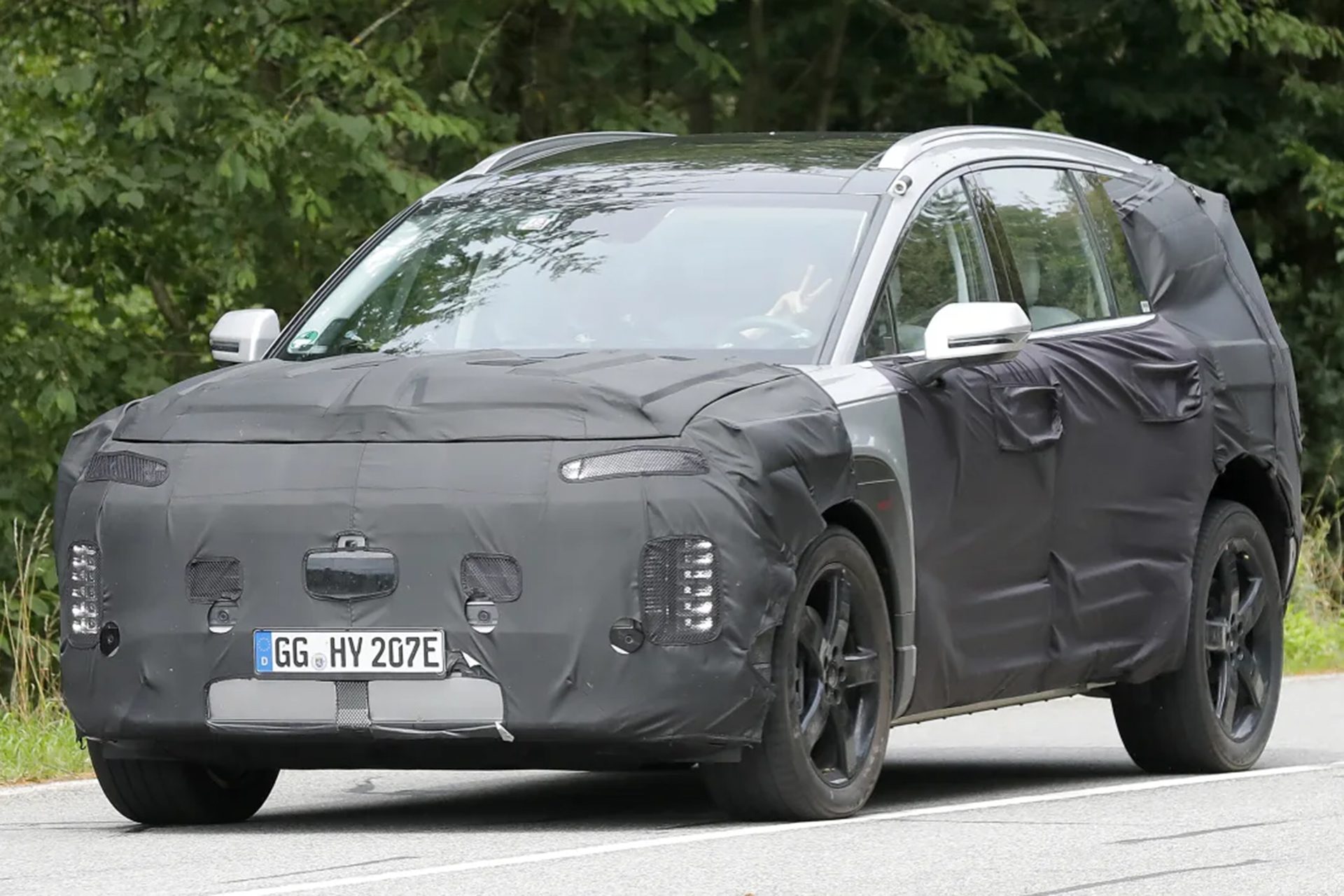
Some markets will have the option of Digital Side Mirrors that relay images to a seven-inch OLED monitor. It zooms out for reversing, has manoeuvering guidelines, and an auxiliary line for lane changes.
Customers can choose from 16 different colour options while inside there are six two-tone colour options.
New Zealand can expect to receive Ioniq 9 in the second half of next year when detailed specs and pricing will be to hand. It launches first in Korea and the US.


